Search
Did you mean: Agora?
Search Results
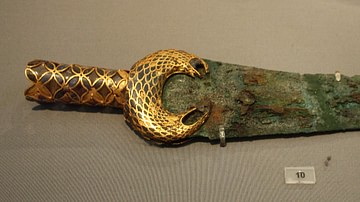
Image
Bronze & Gold Mycenaean Sword
A bronze Mycenaean sword with a gold handle inlaid with lapis lazuli, from Mycenae, Grave IV, Grave Circle A, 16th century BCE.
National Archaeological Museum, Athens.
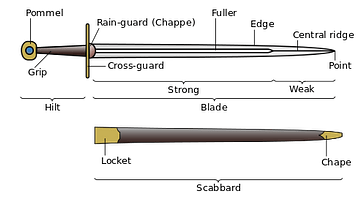
Image
Elements of a Medieval Great Sword
A diagram illustrating the various components of a medieval Great Sword and scabbard, the typical weapon of knights.

Image
Han Dynasty Sword
A Han dynasty iron sword and scabbard with wood and lacquer decoration, China, 2nd century BCE. (British Museum, London)

Image
Mycenaean Gold Sword Hilt
A Mycenaean gold sword hilt with bronze blade. From a tomb in Skopelos, 15th century BCE. (National Archaeological Museum, Athens)

Image
Medieval Great Sword
A medieval Great Sword, c. 1400 CE. This weapon was the typical weapon of a European knight. L. 40 1/4 in. (102.2 cm); L. of blade 32 in. (81.3 cm); Wt. 3 lb. 11 oz. (1673 g). (Metropolitan Museum of Art, New York)
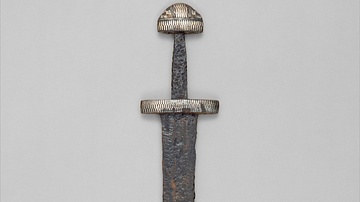
Image
Viking Pattern-Welded Sword
A 10th Century CE steel sword, likely made in Scandinavia. The high quality of the pattern-welded steel blade, and beautiful decoration on the hilt, indicates that it was owned by a high status warrior. Steel blade, decorated with copper...
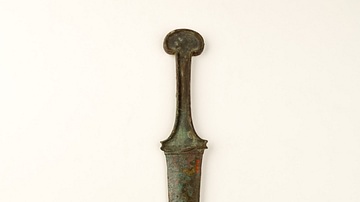
Image
Egyptian Bronze Sword
A straight bronze sword from the Egyptian New Kingdom. Length: 52 cm (20 1.2 in). Thebes, Egypt. 18th Dynasty, 1550–1458 BCE. (Courtesy of the Metropolitan Museum of Art)
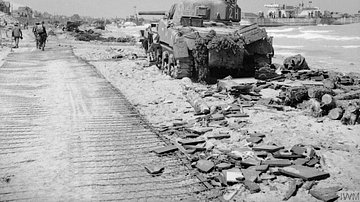
Image
Abandoned Tank, Sword Beach
A photograph of an abandoned British flail tank on Sword Beach during the D-Day Normandy Landings of 6 June 1944. (Imperial War Museums)

Image
Eastern Zhou Sword
A bronze, double-edged straight sword from the Eastern Zhou Dynasty. Decorated with turqoise and gold. Warring States Period, c. early 5th century BCE. China. (Courtesy of the Smithsonian Institute)

Image
British Commandos, Sword Beach
A photograph showing British commandos of the 1st Special Service Brigade attacking Sword Beach on D-Day 6 June 1944. The brigade was led by Lord Lovat (seen in the photo on the right of the column wading in the sea). (Imperial War Museums)